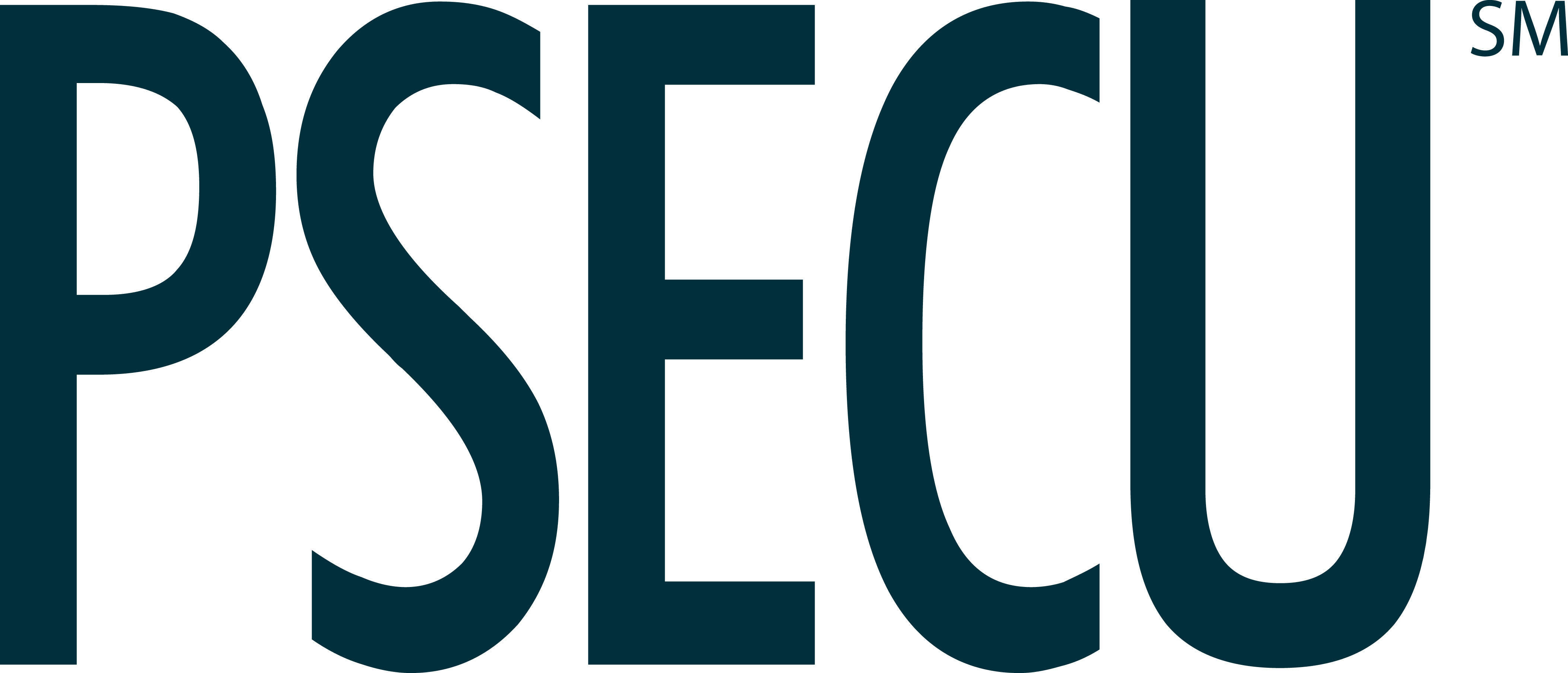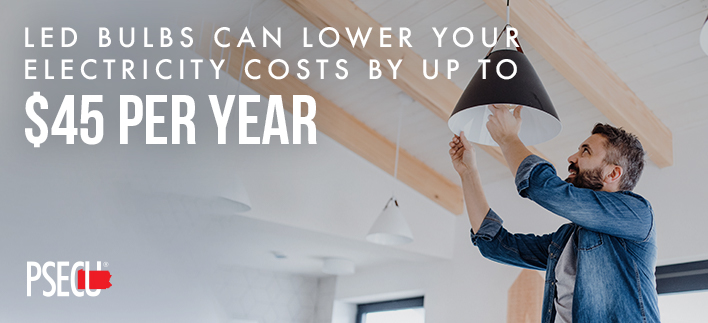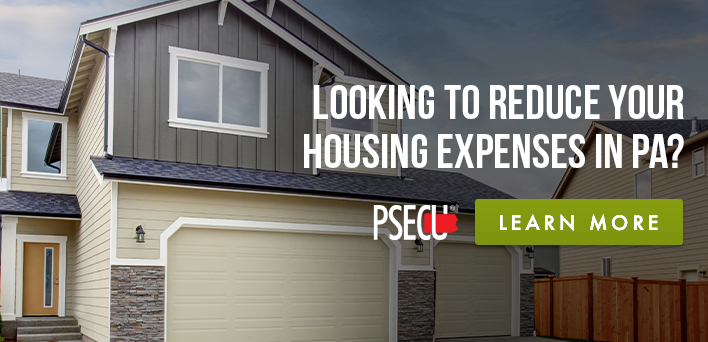You may have heard that homeownership is less expensive than renting in the long run. When you make mortgage payments on a property, you’re building up the equity in your home until you own the property outright. In contrast, rental payments are often described as “throwing money away.”
While your mortgage payments might end up being lower than your rental payments on a similar property, there’s more to the cost of homeownership than paying down the mortgage. You also need to pay to maintain the property and its systems, and you might eventually need to pay for extensive repairs or upgrades. Having a realistic idea of the true cost of homeownership before you buy will help you prepare for any costs that come your way. It’s also worthwhile to find methods to lower the cost of homeownership, so you can save for the future and reach your other financial goals.
How to Reduce Home Maintenance Costs
When it comes to taking care of your home, it’s much more cost-effective for you to be proactive rather than reactive. Being proactive means maintaining your home’s systems and equipment so that they keep operating as smoothly and efficiently as possible. Taking good care of the various components of your home also reduces the likelihood that there will be a major problem, such as a furnace breakdown or a leaking roof.
You can save more money by taking on certain home maintenance projects and tasks on your own. To make sure you tackle maintenance projects on a regular basis, it can be worthwhile to set aside time for various projects on your schedule. Set calendar reminders every month or every season so that you know when it’s time to check your HVAC system, clean the gutters, or clear out the drains.
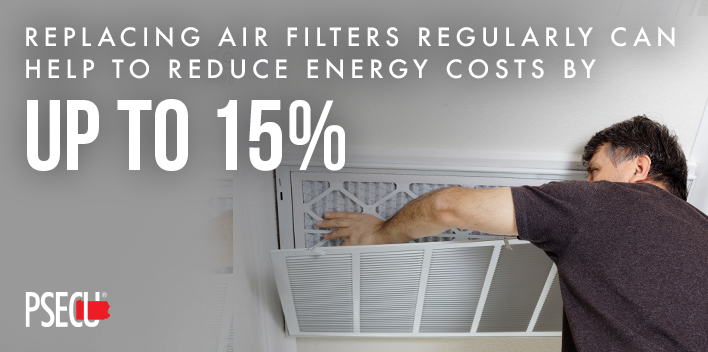
Some of the maintenance projects you can do yourself to save money include:
- Change the air filters on your HVAC system/furnace/air conditioner: The air filters in your HVAC system help to keep dust and debris from swirling through your home. Over time, those filters fill up and can become clogged, causing your system to work harder. Replacing the filters every month or every quarter can help to reduce the system’s energy costs by up to 15%.
- Clean out the drains: Do your best to limit what gets sent down the drains of your sinks and tubs. Install a filter to catch solid items, such as hair or food, over the opening of the drain. Every so often, clear the drain out with vinegar to remove any accumulated gunk.
- Conduct an inspection of your home: Before you bought your home, you most likely hired a home inspector to walk around and assess the condition of the property. Now that you’re the owner, you can take a few minutes every few months to stroll around the outside of your home, conducting a inspection yourself. Visually inspect the interior, as well. Keep an eye out for any changes, such as new cracks along the foundation or signs of damage to the siding and stucco. Detecting issues and calling in a professional to fix them early can help reduce the cost of the repair.
- Clean the gutters: Gutter-clearing might not be the most enjoyable homeowner task, but it’s essential if you want to avoid leaks or interior water damage. Give your gutters a good cleaning at least twice a year, removing leaves and other debris.
- Touch up exterior paint: A new coat of paint on the exterior of your home does more than just improve its look. It can also protect your home, reducing the risk of water damage. Along with freshening up the paint on your home’s exterior, it’s a good idea to deep clean the exterior walls from time to time, removing accumulated dirt and grime.
- Caulk: Caulk is an inexpensive and effective way to seal your home, improving its energy efficiency and reducing the chance of moisture damage. Ideally, you’ll add or repair caulk around the doors, windows, and any other openings in the home to keep hot or cold air out.
- Flush your water heater: Over time, sediment can build up in your water heater, reducing its efficiency. Flushing the heater is a relatively simple task that can help to extend the life of your water heater and save you money in the long run.
- Clean your dryer vent: Lint can build up in the vents of your dryer after repeated use. Lint is very flammable and is one of the leading causes of dryer fires in the U.S. Removing lint from the lint trap before or after every load and cleaning your dryer vent once or twice a year are recommended to reduce the risk of fire and to improve the efficiency of your dryer.
- Trim branches: Trimming the trees around your property can help you save money in a few ways. Cutting away branches that lean over your home reduces the risk of damage should one of them break and fall during a storm. Removing the branches can also keep squirrels and other animals from getting easy access to your home’s attic or roof.
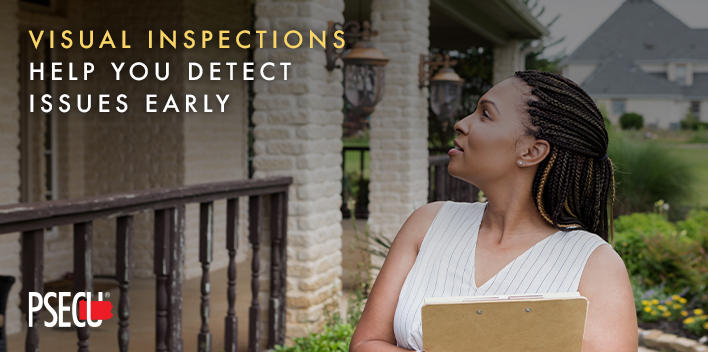
Make Upgrades to Reduce Your Home Expenses
In some cases, upgrading the equipment or fixtures in your home can be the more cost-effective option, compared to maintaining older models. They can help you save money by reducing energy use and make your life more convenient, too.
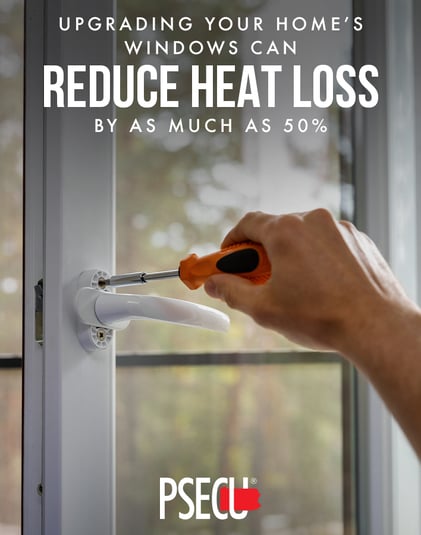
- Upgrade your heating and cooling systems: Although regular inspections and maintenance of the heating and cooling systems in your home will help to extend their lives and keep them running in peak condition, they won’t last forever. There will come a time when replacing an older model with a new, more energy-efficient option is the more cost-effective move. Generally speaking, it’s a good idea to replace your cooling system every decade and to upgrade your furnace every 15 years.
- Install energy-efficient windows: Upgrading your home’s windows can help reduce heat loss through the windows by as much as 50%. Energy-efficient storm windows are better sealed than other options, reducing the amount of air that can flow into and out from your home.
- Replace your thermostat: Raising or lowering your home’s temperature by seven to ten degrees for around eight hours per day can help you lower your heating and cooling costs by about 10%. Since it can be difficult to remember to adjust the thermostat before you run out the door for work or school in the morning, installing a programmable or smart thermostat can be a huge help. A programmable thermostat lets you create a schedule and will adjust the temperature on its own based on that schedule. A smart thermostat learns your habits and begins to adjust itself based on when you are usually home. You can also connect a smart thermostat to your mobile device and turn the temperature up or down remotely.
- Install ceiling fans: You can reduce your home’s air conditioning use by installing ceiling fans in rooms and using those fans to create a gentle breeze on warm, but not searing hot, days. Ceiling fans can also allow you to increase the temperature on your thermostat without sacrificing comfort when it is very hot outside.
- Change your lighting: If you swap out your home’s five most-used light fixtures with energy-efficient bulbs, such as LED bulbs, you can lower your electricity costs by up to $45 per year. Depending on the type of lamps you have in your home, changing your lighting might be as simple as swapping out the bulbs. If the overhead fixtures aren’t energy-efficient models, you might find it worthwhile to install new ones to save money in the long run.
- Install low-flow fixtures: Upgrading the faucets, showerheads, and toilets in your home to fixtures that use less water can help you save money on your water bill. Depending on the age and style of your home’s toilets, they might be responsible for up to 30% of your home’s water use. Newer models of toilets, for example, use 1.28 gallons of water per flush, compared to older models, which used up to six gallons per flush.
- Insulate your attic: Adding insulation to your attic helps to control heat loss and keeps moisture from causing damage to your home. Insulation can lower your energy use and help you avoid costly repairs related to moisture damage in the future. You have several options for adding insulation to the attic of your home, such as laying down foam batts or adding spray foam. How much insulation you need depends on your location. Insulation is rated by R-value, and the higher the R-value, the more heat resistant the insulation is. Colder areas need a higher R-value for the insulation to be effective.
- Upgrade your appliances: Older appliances tend to be less energy-efficient and more expensive to operate compared to newer models. If you have an oven or refrigerator that is more than 10 years old, you might save money over time by replacing it with an energy-efficient model. The same is true for replacing older televisions, dishwashers, and washing machines. You’ll need to pay for the replacement upfront but are likely to pay less in the long run.
How to Lower the Cost of Your Housing Payment
Your monthly mortgage payment is made up of several components.
- Principal
- Interest
- Homeowner’s insurance premiums
- Property tax
- Private mortgage insurance, if you put down less than 20%
Finding a way to reduce the cost of one or more of those components can mean that you may end up paying significantly less each month for housing. One option is to refinance your mortgage. When you refinance, you apply for a new home loan and use the principal from the new loan to pay off the amount owed on the previous mortgage. Refinancing can be an effective way to save money, but it also costs money upfront, so it’s important to weigh the pros and cons of doing it before you jump in.

Pros of Refinancing
Refinancing your home loan can help you save on your monthly payments in several ways. When you refinance, you might take advantage of lower interest rates compared to when you got your first mortgage. Interest rates might have dropped in the time since you bought your home, or your credit might have improved enough that you qualify for a better rate.

Another benefit of refinancing your home loan is that it can help you get rid of private mortgage insurance (PMI) premium payments. If you didn’t put 20% down when you first purchased your home, you are responsible for paying PMI premiums until your loan-to-value ratio is 80% (the equivalent of having made a 20% down payment).
When you refinance your home, you typically need to have the property appraised to make sure you aren’t borrowing more than it’s worth. Depending on the market in your area, it’s possible for the value of your home to have risen enough that the loan-to-value ratio is 80% after you refinance. For example, you bought a $250,000 home five years ago and put 10% ($25,000) down, borrowing $225,000. The appraisal reveals that the value of your home has increased to $300,000. Even though you didn’t pay 20% of the home’s value, it looks like you did on paper, and you can get a new mortgage without PMI.
Another way to lower your monthly payment by refinancing is to extend the payment term of the mortgage. When you took out your first mortgage, you might have decided to get a 15-year loan. After a few years of making payments, you might discover that it’s a bit of a struggle to pay the full amount each month. Refinancing to a 30-year loan can mean you end up with a significantly lower monthly mortgage payment.
Cons of Refinancing
One potential drawback of refinancing your mortgage to lower your monthly costs is that doing so can mean spending more money in the long run. Your monthly payments are less with a 30-year mortgage compared to a 15-year loan, but you also need to make more payments over time. This means you’ll end up paying considerably more interest over 30 years compared to over 15 years.
Another drawback of refinancing is that it costs money to do so. There are closing costs associated with refinancing that are likely to be just as much as they were when you purchased your home. You can compare the upfront costs of a refinance to what you stand to save each month to see if it makes sense for you financially.
Other Ways to Reduce Your Housing Payments
Refinancing isn’t the only way to lower your monthly housing payments. Another option is to find a way to lower your property tax payments. Some counties offer tax discounts or exemptions to homeowners or allow tax abatements on new construction. It can be worthwhile to check with your county to see if you qualify for programs.
Another option is to have your home’s taxable value reassessed by the county if you think your tax bill is too high. A tax assessment isn’t the same thing as an appraisal, so having a lower assessed value will not affect the market value of your home.
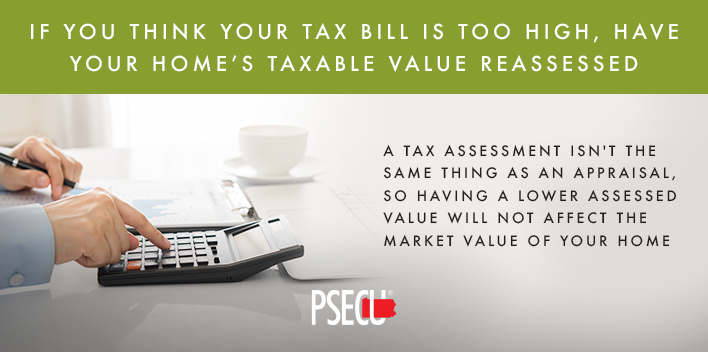
Tips to Help You Save Money at Home
Upgrading your appliances and equipment, performing home maintenance, and refinancing your mortgage are three big-ticket things you can do to lower the cost of owning a home. Along with the big three, there are also a few smaller changes you can make around the house to help bring your overall costs down.
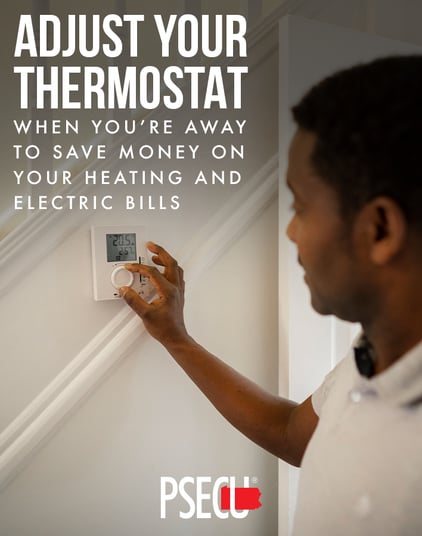
- Lower or raise your thermostat: In the winter, try setting your thermostat to 68 degrees when you’re home and lower when you’re away to save money on your heating bills. In the summer, raise your thermostat to 78 degrees to lower your electric bill.
- Meal plan: Letting food spoil or go to waste means you end up spending more on groceries or meals out. One way to reduce your food waste and control costs is to get in the habit of meal planning. Take stock of what’s in your fridge and pantry each week and plan your meals around what you already have. Try to use what’s going to spoil quickly first. If you need to, make a list of items you need to buy to round out your meal plan and stick to the list when you’re in the store.
- Reconsider your phone, Internet, and cable package: After you’ve been living in your home for a while, you have a better understanding of how much you watch TV or how much you use your home Internet connection. You might be able to cut back your phone, Internet, and TV package if you find that you are paying for more channels than you browse or more Internet speed than necessary. If you’re paying for a home phone, it might be worth considering canceling the service and using your cell phone as your home phone.
- Air-dry your laundry: Air-drying your clothing and other textiles saves you money in two ways. First, it reduces your home energy use, as you aren’t paying for the gas or electricity needed to power your dryer. Second, it extends the life of your clothing and linens, so you don’t need to pay to replace them as frequently.
- Grow herbs: If you have a backyard, small patio, or sunny windowsill, you can brighten up your home-cooked meals and save money on groceries by growing your own herbs. You can usually find herb plants for a few dollars at local farmer’s markets or garden centers. With thriving plants, you can avoid having to purchase fresh herbs from the store.
- Host a plant swap: Perennials will come back year after year in the garden. As the plants get bigger, you can divide them or take cuttings from them, producing new plants. One way to liven up your garden at home without spending a penny is to have a plant swap with your neighbors. Ask people to take a cutting or division from one or more of their plants and bring it to swap with others.
- Make a budget: Knowing how much you make each month and where your money goes can help you stay on track toward your goals. It can also help you figure out what expenses you can stand to cut, if necessary. Although making and sticking to a budget might not lead to immediate savings on your housing payments or costs, it can be one of the most important tools to use for financial success.
PSECU Can Help You Save on Home-Related Costs
Whether reducing your housing expenses means refinancing your mortgage, upgrading your appliances and home systems, or finding ways to trim everyday costs, PSECU is here to help you succeed when it comes to saving money at home.
Check out our WalletWorks page for more financial tips and advice.
The content provided in this publication is for informational purposes only. Nothing stated is to be construed as financial or legal advice. Some products not offered by PSECU. PSECU does not endorse any third parties, including, but not limited to, referenced individuals, companies, organizations, products, blogs, or websites. PSECU does not warrant any advice provided by third parties. PSECU does not guarantee the accuracy or completeness of the information provided by third parties. PSECU recommends that you seek the advice of a qualified financial, tax, legal, or other professional if you have questions.
